The Big Read: High time to talk about racism, but Singapore society ill-equipped after decades of treating it as taboo
Advertisement
Singapore
The Big Read: High time to talk about racism, but Singapore society sick-equipped after decades of treating it as taboo
Activists, community organisers and academics hold that the conversations of race need to move frontward productively in the age of social media where tensions are inflamed easily.
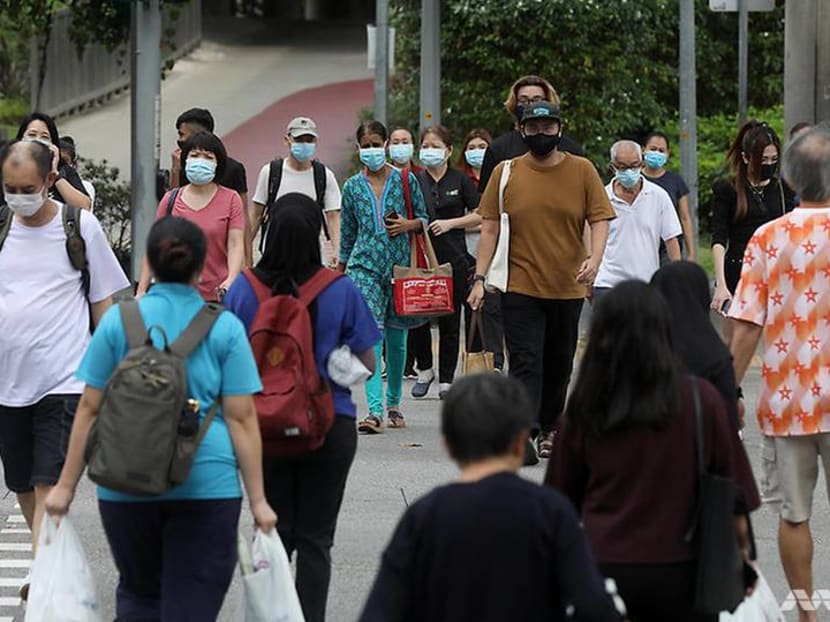
Because of Singapore'south diverse gild and the dynamics amid the major cultural and indigenous groups, the topic of race is present in every discussion, every outcome, and every policy. (Photo: TODAY/Nuria Ling)
SINGAPORE: When former national sprinter Canagasabai Kunalan and his wife, Madam Chong Yoong Yin, both 79, saw the viral video of a polytechnic lecturer making racist remarks to an interracial couple 2 weeks ago, they couldn't believe their optics.
The video evoked memories of 1964, when the couple were given the ultimatum past their families to end their human relationship or exit their homes — considering one of them was Indian and the other was Chinese — amongst the racial tensions that were gripping Singapore.
"Singaporeans now are so educated … how can we still think similar this?" said Mr Kunalan.
The racial riots between the Malays and Chinese in Singapore following its merger with Malaysia in 1963 plunged the land into nationwide violence. Houses were burnt down, the police were deployed to enforce curfews and people were beaten and killed.
Yet, fifty-fifty in the virtually uncertain of times, there were likewise people of different ethnic groups continuing together regardless of race.
Older generations of Singaporeans recounted how people stepped up in solidarity when emotive racial conflicts shattered the peace.
Mr Kunalan, who was then a 22-yr-sometime sprinter preparing for the 1964 Tokyo Olympics, said: "The riots were happening in dissimilar areas in Singapore. Surprisingly, in my kampung (village), it was peaceful. There were no tensions at all. Or maybe we merely didn't know what was happening on the other side."
Mr Lionel de Souza, 78, a quondam constabulary officer who worked as a community liaison officer in Geylang during the 1964 racial riots, recalled how Singaporeans volunteered in droves for "goodwill committees" as well as the Vigilante Corps to help keep the peace in volatile areas during curfew hours.
READ: WP calls for greater agreement, mutual respect amid efforts to eradicate bigotry and racism: Pritam Singh
Comprising an equal number of Chinese and Malay volunteers, they and Mr de Souza would patrol their beat in Kampung Kim Hong and talk to residents in coffee shops and town halls to help dispel suspicion between the unlike Chinese and Malay groups that were then segregated in different villages.
"There were allegations that people on one side were shooting fire arrows at the other, and rumours were flight everywhere," said Mr de Souza of the state of affairs then.
Singapore has since come up a long way from those dark days of violent racial conflict, having taken early steps as a newly independent nation to abandon colonial-era race-based policies, and pledging to non let racial error lines divide society.
Following its independence, the young Republic embarked on a unique path amidst nations of the time as a multiracial and multicultural country, i that affirms its ethnic diversity equally a forcefulness and recognises the rights of minorities.
Dr Janil Puthucheary, Senior Minister of State for Communications and Information, said in an interview with TODAY: "Many societies have had to wrestle with (race, racism and multiculturalism) around the earth, but the place that multiculturalism has in our aspirations equally a people is quite special. It is fundamentally why nosotros became an independent country."
Considering of Singapore'south diverse society and the dynamics among the major cultural and ethnic groups, the topic of race is present in every give-and-take, every event, and every policy.
"Y'all need to then understand our social context, our historical context and our future in order to have a dialogue about race productively in Singapore," said Dr Janil.
Withal, the topic of racism has returned to the fore again following recent events, including the street confrontation between the Ngee Ann Polytechnic lecturer and an inter-ethnic couple too equally other viral videos of racially-charged encounters.
READ: Racism exists just Singapore has made 'tremendous progress' in racial harmony: Shanmugam
Commenting on the video, Police force and Home Affairs Minister K Shanmugam had said in a Facebook post: "I used to believe that Singapore was moving in the right management on racial tolerance and harmony. Based on recent events, I am not and so certain anymore."
Activists, community organisers and academics spoken to agree that the conversations of race need to motion forward productively in the age of social media where tensions are inflamed easily.
And when the heat surrounding the contempo incidents fades away, some proficient may emerge from these episodes if Singaporeans can empathize the experiences of others and appoint with each other in good faith, several said.
Associate Professor Chong Ja Ian, a political scientist from the National University of Singapore (NUS), said: "Information technology is important, in my opinion, to place these biases and stereotypes and understand where they come up from and how they link to the diverse fears, anxieties, suspicions, frustrations that people take.
"Some of this will look ugly, but if we tin can first addressing them flake by bit, with agreement, at that place is a good gamble nosotros can move forward."
Pondering near what the recent racist incidents say about the state and direction of Singapore's hard-won racial harmony, older Singaporeans such as Mr Kunalan and Mr de Souza know that the stakes are high.
"We never want that (racial riots) to happen again, which is why nosotros should all experience strongly about protecting our racial harmony," said Mr de Souza.
(Can we have conversations well-nigh race and diverseness and how practice we have on views of younger Singaporeans who may desire a more than open up discussion? Experts hash out this on CNA's Middle of the Matter podcast.)
WHAT IS RACISM?
The Oxford English Dictionary today defines racism every bit acts of prejudice, bigotry and antagonism by a person, community or establishment confronting a person or people based on their race and ethnic identity.
And by this definition, racism is unremarkably experienced by people from minority racial groups that are subjected to such acts of discrimination.
But equally contributing writer Ben Zimmer for The Atlantic magazine wrote, fifty-fifty dictionaries had to revise their definitions about racism.
Earlier 2020, the Merriam-Webster Dictionary primarily divers racism as "a belief that race is the primary determinant of human traits and capacities and that racial differences produce an inherent superiority of a particular race".
READ: Ngee Ann Poly lecturer who allegedly shared 'personal and derogatory views' on Islam could be dismissed: Maliki
It was also divers as "a doctrine or political program based on the assumption of racism and designed to execute its principles". This secondary definition was refined to "the systemic oppression of a racial group to the social, economic, and political advantage of another", following the Black Lives Affair protests in the U.s.a. last twelvemonth.
Mr Mohamed Imran Mohamed Taib, founding lath member of the Centre for Interfaith Understanding (CIFU) in Singapore, said that racism is essentially formed from two components — that a race has essential traits and characteristics, and whether these are behind the inequalities and disparities betwixt the races in society.
"Therefore, racism is any act, system or policy that appeals to or reinforces 'essentialised' perceptions of racial groups that strengthens the political, economic or cultural inequalities between the races in society," he said.
Regardless of which definition is all-time, the debate of what racism is, and what makes an activeness or spoken communication racist, has also emerged in Singapore in recent days.
In May, an Indian woman was called racial slurs and kicked in the chest past a Chinese homo while brisk-walking along Choa Chu Kang Drive. He had insisted she wear a mask even though she was exercising.
A month later, Ngee Ann Polytechnic lecturer Tan Boon Lee was seen in a viral video confronting and making racist remarks towards an inter-ethnic couple, while proclaiming to be a racist himself.
READ: Ngee Ann Polytechnic to sack teaching staff member who made racist remarks to couple in video
Allegations past a former student that he had fabricated Islamophobic remarks in grade surfaced a calendar week later. The polytechnic has since said it would sack Mr Tan, after completing investigations into the two matters.
Some other video was uploaded the aforementioned week of a Chinese woman striking a small-scale gong repeatedly while an Indian human being was ringing a prayer bell outside his public housing flat as part of his daily prayers.
But the fence about what constitutes racism grew loudest online in the case of Ms Sarah Bagharib, who had called out the People's Association for using a cutout of her nuptials photo — sans the couple's faces — as part of Hari Raya decorations without her permission.
Netizens were split on the outcome. Some claimed that the affair is not a case of racism simply one of cultural insensitivity. Others were wont to betoken out that racism does not be in Singapore, which prides itself on its multiracial society.
READ: Singapore will fail if racism and xenophobia accept root: Shanmugam
READ: Cancelled meeting with PA a 'missed opportunity for effective dialogue', says woman in standee controversy
Another viewpoint was that the blunder was made because of a lack of agreement of the Malay culture that had stemmed from ignorance that needed to be dismantled.
As Dr Nazry Bahrawi, a senior lecturer at the Singapore Academy of Technology and Design, put it, two narratives take emerged nearly the state of race relations here — one says Singapore is racially harmonious, and another says that it is yet non quite at that place.
"The first has been the official position reproduced on many occasions and in many spheres, while the latter is a position that has received less airing considering information technology is perceived to be less valid, making those who raise it seem similar they are troublemakers or have an agenda to divide gild," said Dr Nazry.
For race soapbox to be productive, Singaporeans from all walks of life must first be able to found that racist acts are not condoned by lodge.
"Because, if and then, so it would exist considered outlandish that people who phone call out racism are seen as playing the race card," he said, adding that these people might be commenting from a position of privilege as they may non have experienced racism.
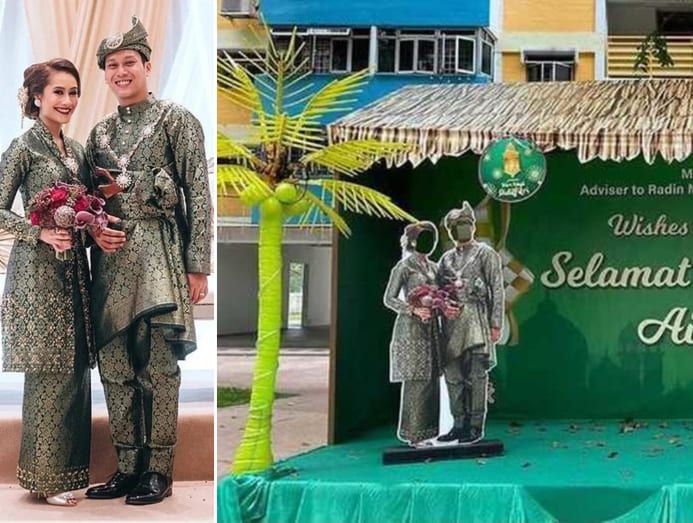
Asked about this, Dr Janil, who is also the chairperson of the non-turn a profit OnePeople.sg (OPSG), said it is not a bad affair that there are people who land that they take never experienced racism or accept never seen information technology happen.
The turning betoken is when they find out that because not anybody shares this view, they may exist "energised" to ameliorate the experiences of others, he said.
"The uncharitable view is to say 'hello, wake up, you don't know what's going on and you don't recognise (racism)... Merely the glass half-total version is, aren't we lucky that there are some people who have really had this feel in Singapore, it'south a sign ... that maybe nosotros've made some progress."
Such views are also heard among people who participate in OPSG's initiatives on race likewise, especially amongst younger participants who have been "blessed with a positive feel almost race", but also could larn about the negative experiences of others, Dr Janil added.
The Singapore Regime has taken the approach that racism exists here, he emphasised.
"What we want to be sure of is that our policies, our systems, our approach, is to understand that in that location is racism, and nosotros must always push against it," said Dr Janil.
Comparing indicators of racial and religious harmony from 2022 and 2018, a written report past the Institute of Policy Studies (IPS) and OPSG in 2022 found that while racism exists, it is not widespread in Singapore.
Lead researcher Dr Mathew Mathews said most 10 per cent of Chinese respondents in the study and around 20 per cent of minorities said that they had experienced racial tension in the 2022 study. There was little change from the results of the 2022 findings.
READ: Declared incidents of racism 'become against what we stand for in Singapore': Chan Chun Sing
READ: Commentary: Edifice racial harmony in Singapore must outset from an early age
"When asked virtually specific incidents, almost cited they had felt insulted at how perhaps social/mainstream media had portrayed their race or cultural practices – so there is certainly some racism here, but information technology is not rampant," said Dr Mathews.
WHY SOME STILL CONSIDER It TABOO
On the other paw, some people felt that the recent spate of racist incidents is an indication that racism in Singapore non only exists but has been gathering speed for some time, though hidden from view considering of a lack of soapbox and the difficulty in detecting unintentional and unconscious forms of racism.
Dr Peter Chew, a senior lecturer of psychology at the James Cook Academy, explained that overt racism tends to be low in Singapore due to the function of laws that protect racial harmony hither, such as the Sedition Deed.
The Act makes it illegal for anyone in Singapore to promote feelings of sick-will and hostility between different races or classes of the population.
Laws like these do well to keep overt racism in check only also have an effect of quieting discourse virtually race, he said.
"This reluctance could be due to a misunderstanding of what constitutes racism.
Anecdotally, some individuals think that talking most race or pointing out racist incidents is, by their very nature, racist," said Dr Chew.
A 2022 CNA and IPS study, which was also led by Dr Mathews, found that two-thirds of respondents felt that discussions of race could lead to tension.
READ: Adult female who fabricated comments about race charged with public nuisance, acting against racial harmony
Raising such issues may exist deemed "too sensitive", and so bug nigh race and culture tend to exist idea of as private matters rather than meant for broader conversations, said the researcher.
Agreeing, Mr Gosteloa Spencer, founder of community group Not OK SG, said this could exist due to generations of Singaporeans suppressing talk of racism, bigotry, and racial inequality for fear of creating rifts among the unlike ethnic communities.
He believes it is this inhibition that led to coincidental racism, where people make jokes, off-handed comments, or exclusionary body language based on race. These acts also ofttimes become unnoticed and unaddressed.
"Merely because it's casual, does it make it okay to pass a racist comment?" he added. "Racism is racism, no matter what form it takes."
Mr Sharvesh Leatchmanan, co-founder and editor of Minority Voices, which serves as a platform for minorities who have faced discrimination to come along and share their experiences, said the concept of racial tolerance that is entrenched in the Singapore identity has too been problematic.
"Over fourth dimension, this tolerance runs out … every bit tin can exist seen from the recent acts of racism on social media. Nosotros demand to move away from tolerance to acceptance and commemoration."
Just while Singaporeans may have held dorsum on talking about race in the past, some said that this is rapidly changing in the age of social media, where racially charged incidents can exist rapidly shared online and go viral.
And these incidents also encourage others to speak up and to phone call out racist acts publicly.
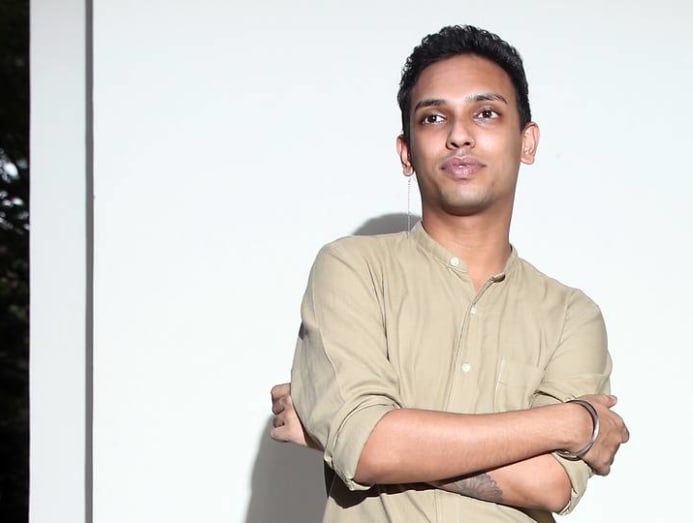
Mr Sharvesh, 24, said he received more a hundred submissions from people sharing their stories of discrimination over the by week.
Ms Priyahnisha, who goes past one name, is the founder of non-turn a profit system Mental Human action, which champions mental health services in the Indian community.
She noted the overwhelming response recently to any content on racism that she or her organisation put upwardly on social media.
The 29-year-former full-fourth dimension professional person counsellor at a social service agency added: "As soon as we mail service, the likes, comments and shares really escalate and it has actually been manner off the charts as compared to whatever of the other content we have put upward in the past couple of months".
The trouble is that when people talk about race, their past inexperience means they lack the linguistic communication and protocols needed to discuss it in a constructive manner, said those interviewed.
NUS' Assoc Prof Chong said: "Singaporeans are not the all-time-equipped to handle such discussions because we have put them aside for so long."
"But there are opportunities to learn … What is important is to not hastily conclude that the other side has bad organized religion, specially if the other party is engaging from a position of relative weakness and vulnerability," he added. "It is through such engagement that we develop a vocabulary and approach suitable for our society."
'Condom AND BRAVE' SPACES … Not JUST BEHIND CLOSED DOORS
Before this month, Mr Jose Raymond started the Telephone call It Out SG move with iii others to heighten sensation of issues pertaining to race following the slew of racist incidents hither. "This is simply a case of minorities maxim that plenty is enough and that racism is inexcusable," he said.
"Perchance in the past, when minorities faced racism, we didn't accept the tools to articulate ourselves properly or the courage to telephone call it out. Now we do," added the erstwhile Singapore People'south Party chairman.
READ: PM Lee Hsien Loong and other ministers speak out confronting racism after alleged attack
The motion urges people to call out instances of racism that they come across, and has gained momentum in the light of the recent incidents.
On the flipside, while the process of publicly calling for accountability and boycotting if nothing else seems to work, has go an important tool of social justice, Mr Spencer said it is hard to command the extent of it and brand certain things exercise not get out of hand.
Associate Professor Daniel Goh, an NUS sociologist specialising in race relations, noted that information technology is people's "duty to call out racism when we see it".
"The question is how nosotros practise it," he said.
"We should do information technology in a respectful fashion that seeks to educate each other and deepen intercultural understanding, and the large role of the burden should non fall on the victims or members of ethnic minorities to practise and so, members of the ethnic bulk should do then too."
For more severe forms of bigotry, such as getting fired from a chore, physical violence, or the shaming of ethnic minorities in a classroom setting, for case, victims should call for institutional and legal redress, said the sometime Workers' Party (WP) Non-Constituency Member of Parliament (NCMP).
"The central calculus for me is how to balance education with redress, and my hope is that the victim is not solitary in calculating this and can depend on witnesses and friends, especially those from the indigenous bulk, for aid and support," said Assoc Prof Goh, who had stepped down from WP's leadership due to wellness reasons but remains a party member.
Referring to the parliamentary replies to MP Faisal Manap (WP-Aljunied) earlier this year on the result of the tudung, Assoc Prof Goh said the regime rely on "back channels" for discussions and resolutions, and to manage racial relations in a pragmatic and careful way.
READ: Authorities should prepare to allow Muslim nurses to wear the tudung: PM Lee
Mr Faisal had asked in Parliament whether the Government would relook allowing Muslim women in uniformed services to don the tudung. In response, Minister-in-charge of Muslim Diplomacy Masagos Zulkifli said the topics that involve racial and religious insensitivities have to be discussed abroad from the glare of the public.
Mr Masagos said this is because "public aggressive pressure" can only make compromise harder and whatever government concession to religious pressure would also cause other groups to prefer similarly aggressive postures.
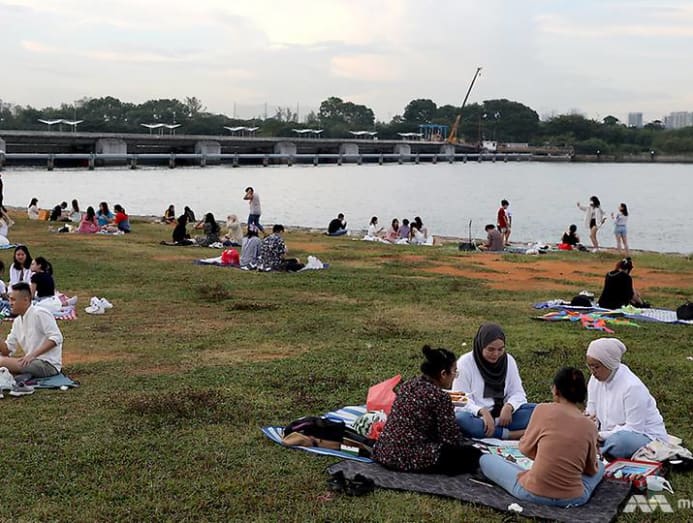
Assoc Prof Goh highlighted examples of rubber spaces where such problems could be discussed, such as the Inter-Racial and Religious Conviction Circles.
"A space is safe when all participants can come up to speak confidently and freely of their experiences with the expectation that everyone will listen and seek deeper understanding as equals and peers, all in a respectful fashion without fright of discrimination, harassment, criticism or emotional violence," said Assoc Prof Goh.
But the Regime would have to adapt to changing trends in cyberspace culture, social media and social justice. He noted that for younger generations of Singaporeans, the cyberspace and social media make upwardly "the natural space for their articulation (on issues of business concern) … not dorsum channels".
Mr Raymond agreed, stating that racism does not hide behind closed doors.
Responding, Dr Janil, who is from the ruling People's Action Party, said there will ever be a need for both public discussions and individual dialogues.
"It is not an either-or. Race is a multifaceted event," he said.
OPSG, for case, has moved its activities online in the course of the pandemic. Despite the usual people-to-people nature of its engagements, it has been able to maintain participation rates and in some cases, accomplish out to new spaces for people to be involved in.
Outside of the non-profit, Dr Janil observed that in the last five years, there are already increasing numbers of Singaporeans engaging in the online space to push back against extreme views.
READ: Government appreciates growing significance of tudung to Muslims, because how nurses tin can wear it with uniforms: PM Lee
"(They are) basically saying, 'hey expect, hither'southward the middle basis, let's observe a way to bring peace to this'. So in that sense I approximate they are trying to create some safety space online and it's tough because the online space is oft dominated past extreme views," said Dr Janil.
Aside from safety spaces, CIFU'south Mr Imran also urged the creation of "dauntless spaces" for people to confront their own views while listening to the experience of those at the receiving ends of racism.
"A brave infinite involves the willingness to interrogate our ain assumptions and take a stand to correct our disability to see privilege and other blindspots that nosotros have. A safety space opens up the conversation. But a dauntless space ensures that the chat becomes transformative and not a mere commutation of stories," he said.
POLICIES WHICH SHAPED SOCIETY
In its history, Singapore has relied on a panoply of policies to maintain a harmonious state, and to ensure minority representation in the highest echelons of governance.
The Housing and Development Board's Ethnic Integration Policy, for instance, helps to ensure a balanced mix of various ethnic communities in public housing estates and prevent the formation of racial enclaves.
The four self-help groups — the Chinese Development Assist Council, Eurasian Association, Singapore Indian Development Association and Yayasan Mendaki — were also conceived to build resilient communities.
The Grouping Representation Constituency (GRC) scheme, along with the reserved presidential election, was implemented to enshrine minority representation in leadership positions and Parliament.
These policies and laws are part of what builds a brand of "active and inclusive multiculturalism", equally described by and so Deputy Prime Government minister Tharman Shanmugaratnam in 2017.
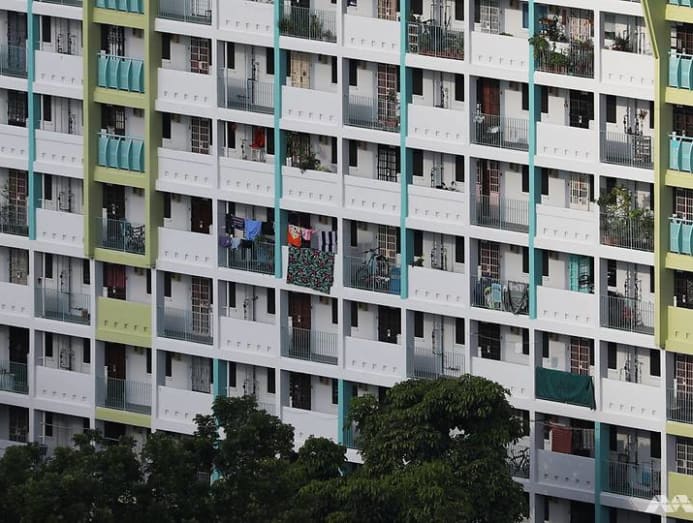
Such an approach is distinct from the "live and let live" mindset in many other countries, which has resulted in communities elsewhere that are living apart and also growing apart, he said.
The fundamental is non to dilute or weaken the various cultures in the promise of developing a single, common culture, nor is it to strengthen each dissever culture. The former will likely create a dislocated cultural identity, while the latter will not foster a strong national identity, Mr Tharman had said.
But following the contempo spate of racist incidents, some people have also questioned whether information technology was still useful to retain the traditional Chinese, Malay, Indian and Others (CMIO) framework, the foundation on which many policies have been based upon.
Speaking in a webinar organised by Academia.sg website last calendar week, Dr Lai Ah-Eng, an offshoot senior fellow acquaintance at NUS' University Scholars Programme, said the CMIO model imposes a racialised lens and tends to ignore "hybridities" such as mixed marriages.
"Do we throw out this CMIO framework as some people take argued for, or should we do a more reduced and careful referencing by ethnicity, bearing in mind that some groups at to the lowest degree still want their ethnic identities as role of a larger range of multiple identities," said Dr Lai.
Acquaintance Professor Anju Mary Paul, an international migration scholar from the Yale-NUS Higher, said in the webinar that the CMIO model serves as a neat and a simple model which helps people go nigh their daily lives.
"But as Singapore society becomes increasingly circuitous, this model is showing some strain," she said.
As of 2018, more than than ane in five couples who tie the knot are in mixed marriages, co-ordinate to official statistics.
READ: PA cancels meeting with couple whose photograph was used as standee, denies incident was racist
Dr Nazry said information technology is of import to sympathize that racism is not "natural" because race itself is a social construct, as many scholars have said.
"Now, this does not mean that the sense of belonging to an ethnic community is not real — this is influenced by our context, family unit, society and personal experiences.
"I remember we can brainstorm with the acknowledgement that diversity exists inside our ain ethnic community ... This sounds simple, but information technology is not equally practised as it should be," Dr Nazry said.
Dr Janil said that the CMIO framework is a policy tool and should not be conflated with the goals of multiculturalism in Singapore. Any social policy or social intervention that is based on a racial categorisation will need such a framework, he added.
"You can remove racial categorisation from your (NRIC), merely that is not going to prevent someone knowing what yous look like when y'all sit across from them at an interview table or laissez passer them on the street," he said.
Experts said what is needed is a keener involvement in each other's cultures, which is something that has to be established from young.
Mr Mohamed Irshad, former Nominated MP and founder of interfaith group Roses of Peace, highlighted the importance of cultural education equally a possible way to motion forward in the race discourse.
"We know about all the different public holidays of various races and religious groups … Beyond that do people know the various non-public holiday events and occasions that the unlike racial and religious groups observe?" said Mr Irshad, 31.
READ: Human being jailed for racially offensive tweets under pseudonym 'Sharon Liew'
"As a land, nosotros tin practice a lot more in educating people almost the various cultural nuances across various ethnic groups."
Such appointment must exist a constant effort in schools and workplaces, and not just something done on Racial Harmony Day, he added.
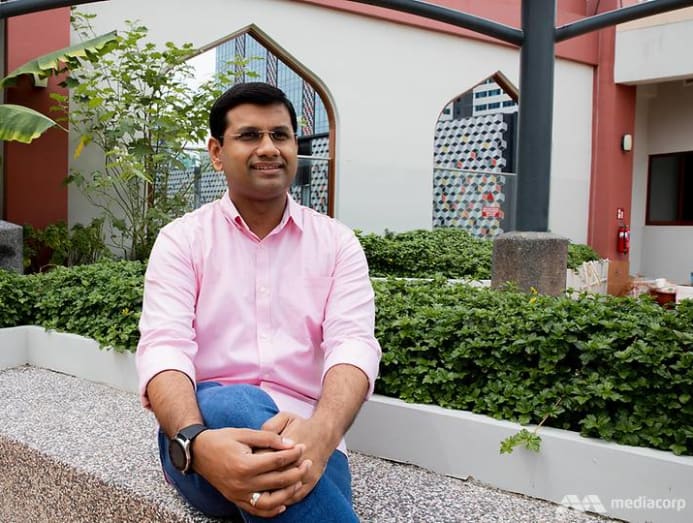
Office MODEL Social club NEEDS TO FIND ITS Ain Way, AGAIN
Singapore may accept come a long way from the 1964 riots to build a multiracial and multicultural society, just it is clear that this is always a work-in-progress for the country, said people interviewed.
Former national sprinter Mr Kunalan said he was thankful that even interracial marriages like his are celebrated now, despite the noise.
Though he believes this racial progress will go on, he is worried that contempo cases of racism may fuel anger among Singaporeans.
"Considering there was a lot of anger and when you have acrimony, at that place is e'er a danger that something might explode," he added, speaking from his experiences back in the day.
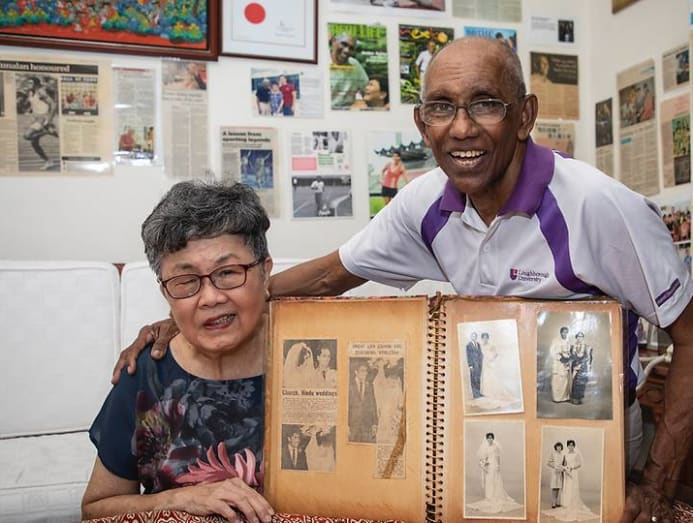
CIFU'south Mr Imran reiterated that the stakes for Singapore are high: "Nosotros cannot allow racism to fester and dissever club. Striving for racial equality even if it cannot be fully realised, is crucial. The national pledge that says 'regardless of race, language or religion to build a democratic society' should proceed to exist our guiding principle."
With racial tensions flaring upward in many countries today, there are as well few positive examples of multiculturalism that Singapore can learn from.
Dr Janil said: "We took that unprecedented step in 1965 when we prepare out on this path … In that location is no one else with our unique history, and at that place'southward no one else that has gone down this road before. But nosotros have been down this road for many decades and nosotros should learn our own lessons first."
In 2013, former Chief Justice Chan Sek Keong gave a lecture to the Singapore Academy of Constabulary on the growth of multiculturalism in Singapore. He said that if demography is destiny, then Singapore's destiny is to be a multicultural land.
"If its citizens are unable to share a mutual space suffused with shared values, the people will forever be unable to forge a nation that can survive and prosper," Mr Chan said then.
READ: Commentary: Worries over ascent COVID-xix cases are fuelling racially charged comments
In an electronic mail to TODAY, Mr Chan, 83, agreed that the contempo racist incidents accept highlighted how racism is innate in Singapore's society. Positive dialogue is sorely needed to motion the topic forward constructively, he said.
Afterwards decades of being held upwards effectually the globe as a role model society for multiculturalism and multiracialism, Singapore seems to exist at a crossroads — and it now needs to find its own way again, having blazed the trail for others.
Surely though, it is doing so from a position of strength, said several academics interviewed.
While some believe that the recent incidents reveal deeper issues that need to be addressed, there is piddling dubiety that inter-racial ties in Singapore are built on a solid foundation, and Singaporeans also need to be careful to ensure that societal fault lines are not exploited by nefarious forces inside and exterior the state.
READ: Commentary: The 2010s – when tolerance and pluralism came under attack
READ: Commentary: Challenging racism starts in the family
Looking back, media consultant Ian de Cotta, 62, attributed this foundation to the kampung spirit which had its heyday in the backwash of the 1964 racial riots.
"Our neighbours' doors were e'er open, even at night, and people would just walk in to chit conversation and take coffee," he said. "This kampung spirit that was and then deeply rooted in our people was something that worked in Singapore's favour."
Agreeing, Mr Kunalan added: "To live harmoniously like in the kampung ... there must be understanding and there must exist forgiveness."
With Singapore's kampung days long gone, the younger generations would do well to retrieve the aphorism equally they find their ain style forward.
Recent Searches
Trending Topics
Source: https://cnalifestyle.channelnewsasia.com/singapore/big-read-high-time-talk-about-racism-singapore-society-ill-equipped-after-decades-treating-it-taboo-295701


0 Response to "The Big Read: High time to talk about racism, but Singapore society ill-equipped after decades of treating it as taboo"
Post a Comment